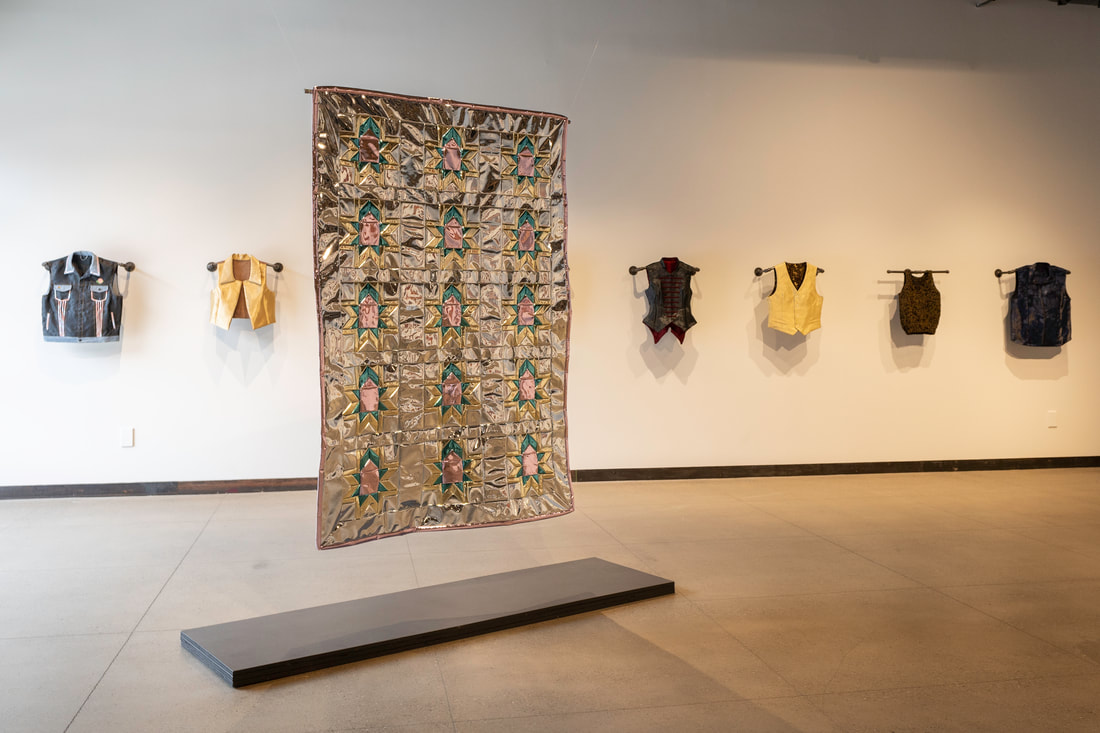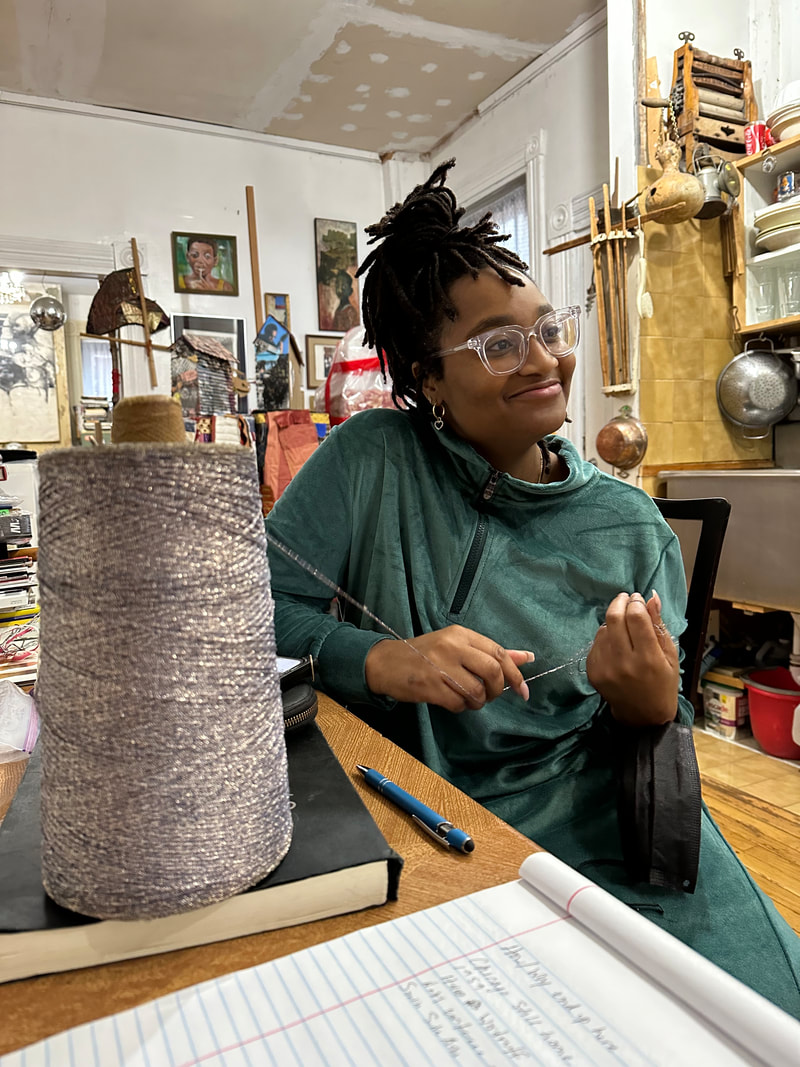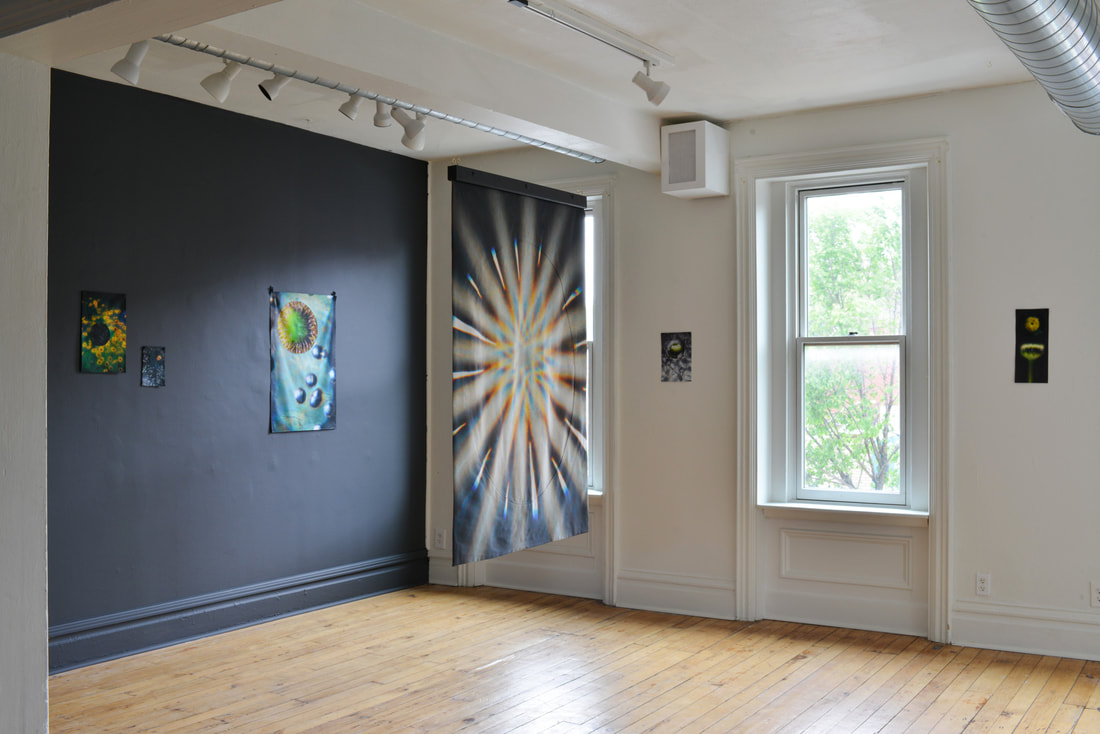08/24/2022
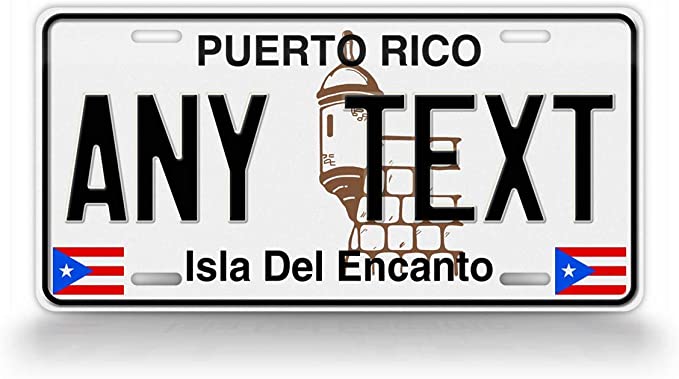
The views and opinions expressed in this article are solely those of the author. They do not reflect the opinions or views of Bunker Projects or its members.In this addition to the The Hand-Off series, artist Armanis Fuentes explores diasporic place-making in domestic decoration, and the community resilience engendered in architectural tradition.
Porqueria, Bridge and Anchor
Living in the sweaty turbulence of diaspora turns homemaking into an anxious enterprise. How do we make home away from Home? How is a filial fissure sutured together again? How do we bridge blood and soil and saltwater?
We’ll begin with porqueria — a word my mom uses often. The closest English-language equivalent to porqueria is probably “junk” (I like that “junk” and “porqueria” also share a relation to food: when I eat too much junk food my mom says I’m “comiendo porqueria”). Food, however, is not the concern of this essay. Here, porqueria is another kind of sustenance: decoration!
Every diasporic group has its own domestic decorative program, its own constellation of inexpensive (sometimes mass-produced) tchotchkes that make a house or apartment feel that much more like Nigeria, Dominica, or, in my case, Puerto Rico. The diasporic domicile brims with little objects, each a portal to another place, another time: a wooden mortar and pestle, a little rooster, a flag, an image of a particular deity. This matriarchal grammar of stuff — novelty objects, knickknacks, kitschy decor — is often trivialized; at best it’s considered ‘vernacular aesthetic’ (whatever that means), at worst, it’s junk, ¡porqueria!
The word porqueria has associations to dirt, trash, that which is unimportant or undervalued. My mom would be mortified to read that I am suggesting her decorative aesthetic is anything close to porqueria. But what drives this essay is the belief that in these associations lies a capacious power. Porqueria has the ability to bridge space and time, to queer notions of here and there, to destabilize borders, to resignify place. If dirt is matter out of place, then porqueria is filthy with dreams of annexation and homemaking. (1)
Puente y ancla, bridge and anchor. Our porqueria helps us to cross over, back Home, but it is also through our porqueria that we are moored to our diasporic home. Familiar ornamentation is replete with expectations and anxieties about occupying space in a foreign, and often hostile, place. Ornaments speak. They say: “We made it. This is where we keep our things. This is Home now.” For the dispossessed and diasporic, decoration, the process of nesting, is a long hope.
One of my mom’s many idioms comes to mind. Más larga que la esperanza de un pobre / longer than the hope of the poor. A hope so long it reaches back Home.
Tablilla and the Poetics of Registration
In the decor-scape of many Puerto Rican domestic spaces — from houses to cars — there are these little tin vanity license plates; I’ve studied them keenly for years. The ritual of mounting these license plates reveals much about the power of porqueria; they are equal parts registration system, teleportation machine, magic incantation, and junk. They’re called simply tablillas, which is the same word used to describe state-issued license plates for vehicles. Unlike official license plates, the vanity plates don’t contain randomly generated letters and numbers; instead, on each of the plates is the name of a Puerto Rican municipality. Yauco, San Juan, Isabella, Boqueron, and so on. Puerto Ricans buy them to commemorate where on the island they, or their families, are from. Hometown pride is a way of life in Puerto Rico, and in the diaspora.
Tablillas for Puerto Rican towns and municipalities. Sources 1, 2, 3, 4
(clockwise from top left).
When we were still Puerto Rico, my family lived in Ponce — a cocky little city on the southern coast. Ponce’s unofficial motto is “Ponce es Ponce, y lo de mas es parking / Ponce is Ponce, and the rest (of the island) is parking.” I have two tablillas, a “Ponce” plate that rests on the dashboard of my car and another one hanging in my bedroom that reads “Naranjito,” the hilltown where I spent summers with my grandma in her little yellow house propped up by cement stilts. My tablillas bring me closer to those places and they bring those places to me. The collection and display of these novelty license plates are an announcement, a familial claim to a place on the island. On walls, dashboards, as stickers on people’s laptops, refrigerator magnets, and even a mural — tablillas are a popular, iconographically dense ornament of the diaspora. So ubiquitous that they go unnoticed, hiding in plain sight. I can’t remember the first time I saw a tablilla, but it was probably, at the time, unremarkable to me. I’ve been desensitized — diaspora Puerto Ricans own so much PR paraphernalia that there are memes about it.
Two memes I found online.
After leaving Puerto Rico, I lived in Holyoke, Massachusetts for a long time. Despite being a small postindustrial city in New England, Holyoke is very Puerto Rican. In 2014, artist David Flores was commissioned to create a work in the city as part of the Holyoke Alleyway Revitalization Project; Flores muralized a novelty Puerto Rican tablilla that reads “Holyoke.” The large, painted tablilla reframes the city of Holyoke as interior to the island of Puerto Rico, as much a Massachusetts municipality as it is a Puerto Rican one, exclave of an island an ocean away, in New England. Flores’s mural follows a tradition of tablillas ‘annexing’ spaces in the United States and claiming them for the island. Some tablillas say “The Bronx,” “Brooklyn,” or “NYRican,” nodding to a long history of migration between Puerto Rico and New York City. In replacing the names of island municipalities with places in the United States, tablillas redraw the contours of Puerto Rico. They suggest that maybe the island is growing into the United States, creating new lived realities at odds with common sense. Can one be in Puerto Rico and in Massachusetts simultaneously? Growing up in Holyoke, sometimes it felt like I was in Puerto Rico, many times it didn’t; it’s a fragile truce. Tablillas bridge not only the island to its diaspora, in the case of Flores’s mural, they register satellites of Puerto Rico in the United States.
Tablillas for American cities. Sources 1, 2, 3, 4.
I’ve been thinking and writing about tablillas for a while. In that time, I have come across nothing written about their existence, certainly nothing that considers seriously their transnational (anti-national?) faculties. So how many Puerto Ricans own tablillas? Does anyone else see tablillas the way that I do? Is this essay art historical mumbo-jumbo? I’ll never know. Instead, I try to find humor in the Glissantian opacity of tablillas. (2) License plates are a tool of governance, a reference for drivers, pedestrians, meter maids, traffic court officials, and, most often, the police. But tablillas are documents escaping documentation, a registry that resists the impulse to know, a catalog whose connective tissue is invisible, untouchable, and stronger for it. Tablillas refuse even my own knowledge and interpretation of them. As I attempt to explain and define, and, in my own way, honor them, their unknowability hangs over me like a little unconcerned cloud, taunting me, comforting me, like a protection spell. Who made the first hometown novelty tablilla? When? Which municipio was on it? Was it Cabo Rojo? Fajardo? Tablillas even reject my labeling. I call them ‘tablillas’ because that is what they’re called, but I’m positive no other Puerto Rican would know what I’m talking about if I asked “hey, do you own any tablillas?” or “where are your tablillas?” They might think I’m asking about their car registration. And yet I’ve seen tablillas countless times. My favorite Puerto Rican restaurant in Holyoke, El Rincon Boricua, sells tablillas at the counter; the last time I was there I asked the lady who tends the register about them and she said that these novelty plates sell fast, new ones come into the store every week.
State-issued license plates, and their peculiar homonym, the novelty tablilla, concern movement and stagnancy, agency and restriction. The former is issued by departments of transportation, the latter at restaurants, bodegas, tienditas, kioskitos, and online retailers. License plates sanction movement; a car without a license plate isn’t allowed to drive around the block. Many tablillas don’t even move. The Ponce tablilla in my car moves around with me as I drive, while the Naranjito one in my room stays in my room, on my well next to my stuffed animals. But even in a state of rest, my tablillas indicate a rupture, an exodus from the island, they show me caught somewhere between the choice to move and a forced departure.
Casitas: A History of Homemaking
Tablillas, in their ability to Puerto Ricannize space in the United States, have an accomplice.
In the Bronx Burnings of the 1970s and early 80s, swaths of housing stock in the South Bronx were incinerated. The fires (often started by landlords for insurance money) displaced countless Puerto Rican and Black American families. As the scorched rubble cooled, little houses, called casitas, began cropping up all over the burning borough. Informed by the ‘vernacular’ architectural styles and traditions of rural Puerto Rico, wood, plaster, and paneling were transformed into structures for family and communal gathering. Casitas hosted parties and dominos games, lunches and lounging, and political organizing. In the wake of divestment and destruction in the Bronx, casitas reactivated abandoned private property for use by the public once again. Casitas materialized community resistance to the razing of their homes by constructing another kind of home, provisional and stark.
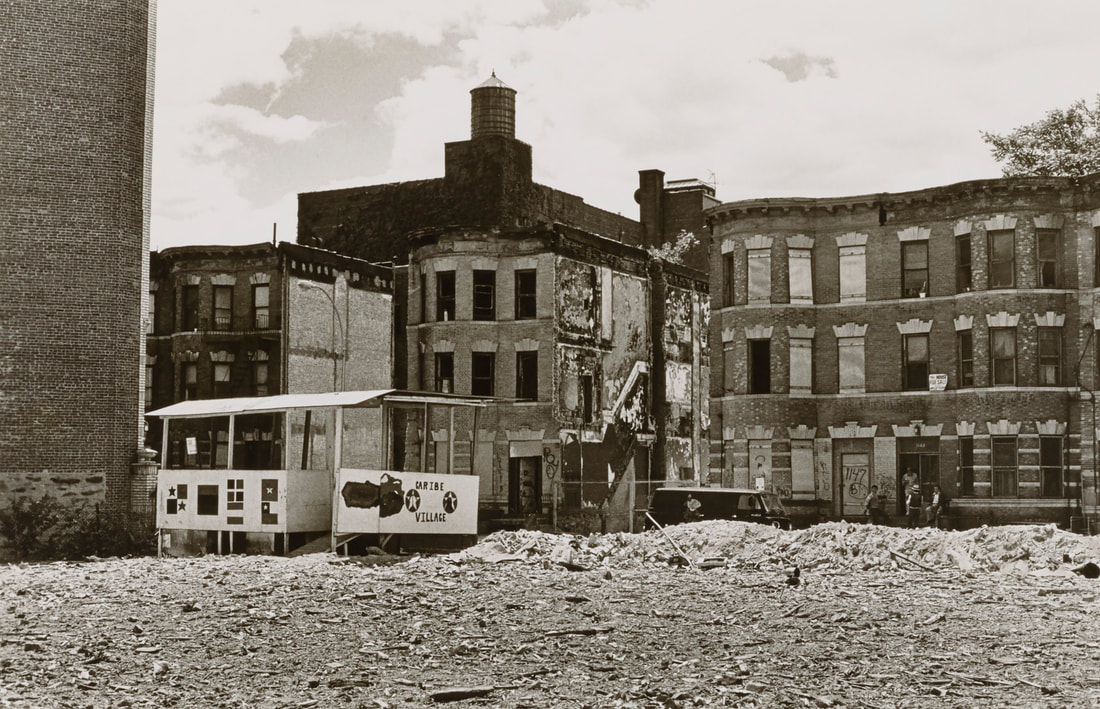
Caribe Village, Perla de Leon, 1980, gelatin silverprint. Source.
In her gelatin silverprint photograph Caribe Village, South Bronx, the artist Perla DeLeon documents one casita, called Caribe Village (casitas were often endowed with a name), as it existed in 1980. Raised on its stilts, Caribe Village floats over the remains of a demolished structure. This casita sits next to a building whose side profile we only get a glimpse of. We see more of the neighborhood’s tenement buildings in the background—derelict, dilapidated. Many of these building’s windows are boarded up; the windows that are not covered allow us a view, albeit oblique, into the tenebrous black filling the apartments. These buildings might, to us, look uninhabited, were it not for the group of people gathered around the threshold of the right-most edifice, just beyond the rubble. This small group of people, the casita, and the section of tree-branch in the top right corner are the only legible signs of life in the photograph. The casita shines with promise. Caribe Village is clearly the newest structure in the composition; it could have been built in a day. DeLeon’s quiet photograph attests that homemaking is an unflinching intervention to dispossession and displacement.
Thankfully, many casitas still exist in New York City, but many more have been dismantled over the years.
Casitas, unlike tablillas, have received attention from academics across disciplines — from historians of art and architecture to scholars of New York City. Publications from Gothamist to the New York Times have reported about casitas.
Casitas are wondrous devices. One common sentiment shared repeatedly by people who built or participated in the culture of casitas is that they invite feelings of being back in Puerto Rico. “I feel like I’m in my country” is the title of one oft-cited 1990 essay about New York City’s casitas written by Joseph Sciorra and Martha Cooper. A more recent examination of Puerto Rican casitas, written for the online real estate and urban design publication Curbed NY, echoes a similar attitude; “This is a little Puerto Rico in the Bronx” states Lydia Pagan, who helped maintain the nearly-forty-year-old El Coqui Community Garden and Casita on E 163rd Street in the Bronx. The New York Times, describing another casita, El Rincon Criollo on E 157th, aptly assessed that these clubhouses are “meant to evoke the Puerto Rican countryside.”
At what point do casitas move beyond evocation and into realization? Or fantasy? Can one be in a casita in the Bronx and be in Puerto Rico?
Imbricated within the imagination and materiality of casitas is teleportation, passage between the ‘discrete’ worlds of Puerto Rico and The Bronx. They exist here and there, but not entirely in either place. I argue that casitas occupy a place apart, a habitual site of worlding, an ontological shoal, a threshold. To cross into a casita is to enter limbo, suspended between The Bronx and Jayuya, or Brooklyn and Orocovis. In a casita, space and time collapse under the desire to domesticate. Casitas engender a performance of settlement, one in which the semiotics of geography are unmoored from reality. It doesn’t matter where a casita is, inside each of these little houses is Puerto Rico. Given, also, the particularly cyclical nature of migration between Puerto Rico and the U.S., casitas corroborate the feeling that these two worlds do not exist discreetly at all. Instead certain settlements in the U.S. are growing into the island, and vice versa.
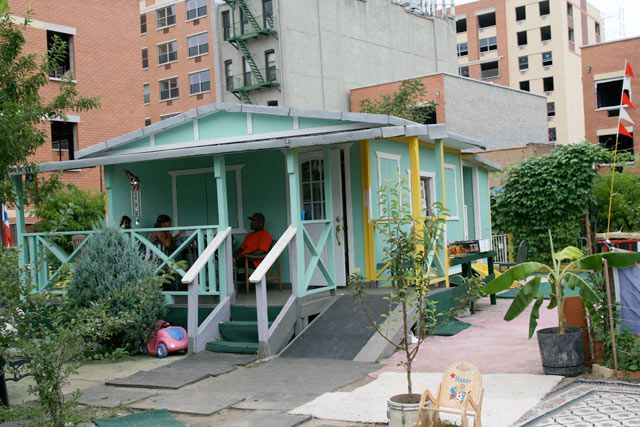
Rincon Criollo, a casita in the Bronx. Source.
Concluding Treatise
In an earlier draft of this essay, I called casitas the ‘historical predecessor’ of tablillas, but that belies their relationship and the point I wish to advance. The word ‘historical’ suggests that casitas are extinct, but as stated above they are alive, if endangered. The word ‘predecessor’ proposes causality and casitas did not cause tablillas. If my argument is that casitas and tablillas both challenge the linearity of time and the logic of space, a causal argument undermines my point. Casitas and tablillas are coextensive tools of diasporic homemaking. Albeit differently, they both Puertoricanize U.S. space and each substantiates the work of the other. Casitas are a quite literal iteration of homemaking, while tablillas work on a more symbolic register. If casitas are “architectural resistance” to the longing of diasporic homemaking, tablillas help us resist ornamentally.
Still, the more interesting question is: Why is the presence of casitas waning as tablillas, at least anecdotally, multiply? What does the tablilla offer that the casita cannot? I think, in short, tablillas offer and extend fugitivity. The logic of ornamentation is inherently diasporic — the movement, the holding, the carrying around, the mounting and dismounting. The home, on the other hand, is literally grounded in its environment. Casitas can be built, but they won’t move without being unbuilt, without reinforcing displacement. Tablillas are like a carry-on bag: light, compact, no baggage fee, trained-to-go. But casitas, they’re more like the airport, a site of transportation and transition that (antithetical to its purpose) is anchored in one place. New York City, long the cradle of Puerto Rican migration to the U.S., is no longer that. Puerto Ricans are homemaking from Holyoke to Kissimmee. And tablillas, both in form and function, reflect that shifting reality and, more to the point, invite a more multiscalar approach to the spatial magic of homemaking. A tablilla is as much tawdry trinket as it is a treatise.
Notes
1. Mary Douglas frames dirt as ‘matter out of place’ in her 1966 essay “The Theory of Dirt.”
2. Édouard Glissant, in Poetics of Relation, advances that opacity, as opposed to transparency, is a generative logic of relation in a transcultural/postcolonial world.
Bibliography
Miwon Kwon, One Place after Another: Site-Specific Art and Locational Identity. MIT Press,
2004.
Chon A. Noriega, Mari Carmen Ramírez, and Pilar Tompkins Rivas, Home—So Different, So Appealing. UCLA CSRC, LACMA, and MFA Houston, 2017.
Carlson, J. (2009, February 23). Will The South Bronx Casitas Get Landmarked? Gothamist. https://gothamist.com/news/will-the-south-bronx-casitas-get-landmarked
Tomás Ybarra-Frausto, “Rasquachismo: A Chicano Sensibility,” Chicano and Chicana Art, 85-90.
Amalia Mesa-Bains, “Domesticana,” Chicano and Chicana Art, 91-99.
Anna Indych, “Nuyorican Baroque: Pepón Osorio’s Chucherías,” CP, 73-83.
Forsyth, et al., “Plazas, Streets, and Markets: What Puerto Ricans Bring to Urban Spaces in Northern Climates,” Landscape Journal 20 (2001): 62-76 (C);
Pepón Osorio, “I Have a Story to Tell You…,” CP, 122-127.
Joseph Sciorra and Martha Cooper, “‘I Feel like I’m in My Country’: Puerto Rican Casitas in New York City,” CP, 156-168.
Luis Aponte-Parés, “Appropriating Place in Puerto Rican Barrios: Preserving Contemporary Urban Landscapes,” CP, 94-111.
Greenberg, C. (1939). Avant-Garde and Kitsch.
Sciorra, Joseph, and Martha Cooper. “‘I Feel like I’m in My Country’: Puerto Rican Casitas in New York City.” TDR (1988-) 34, no. 4 (1990): 156–68. https://doi.org/10.2307/1146049.
Armanis Fuentes is an artist and writer based in Pittsburgh. They are a member of the artist collective Hotbed.
